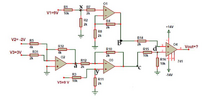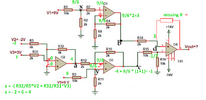circuit975
Member
Greetings to everyone,
I found all values in an opamp question, but I couldn't find the Vout output value. How do we do the formulation?
I mean, with which formula will we calculate vout?

I found all values in an opamp question, but I couldn't find the Vout output value. How do we do the formulation?
I mean, with which formula will we calculate vout?





